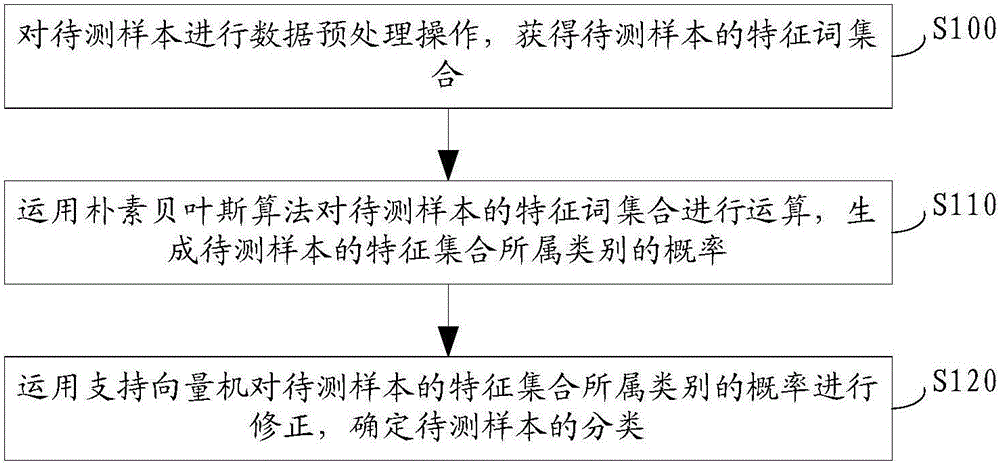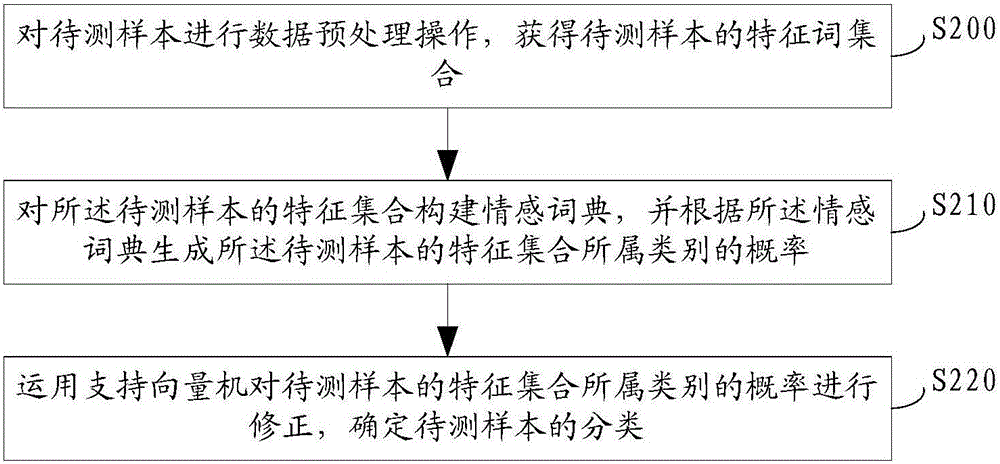Emotion classification method and emotion classification system
A sentiment classification and sentiment dictionary technology, applied in the fields of user sentiment analysis and cross-cultural communication, it can solve the problems of difficult text, obscure sentiment expression, manual labeling of training sets, etc., and achieve the effect of improving the accuracy.
- Summary
- Abstract
- Description
- Claims
- Application Information
AI Technical Summary
Problems solved by technology
Method used
Image
Examples
Embodiment Construction
[0053] The technical solutions of the present invention will be described in further detail below with reference to the accompanying drawings and embodiments.
[0054] The emotion classification of the present invention mainly has two methods based on rules and based on statistics. Due to the continuous appearance of new words, changes in expression methods and complex language processing, rule-based sentiment classification methods are difficult to apply. Statistical-based sentiment classification methods use machine learning methods and text representation models. Among them, the machine learning methods mainly used in sentiment analysis include: Naive Bayesian (Naive Bayesian), K-Nearest Neighbor (KNN), Support Vector Machine (Support Vector Machine, SVM). The text representation model mainly adopts the vector space model (vector space model, VSM). VSM believes that documents are represented in the dictionary space, that is, a document is a one-to-many mapping, expressed a...
PUM
 Login to View More
Login to View More Abstract
Description
Claims
Application Information
 Login to View More
Login to View More - R&D
- Intellectual Property
- Life Sciences
- Materials
- Tech Scout
- Unparalleled Data Quality
- Higher Quality Content
- 60% Fewer Hallucinations
Browse by: Latest US Patents, China's latest patents, Technical Efficacy Thesaurus, Application Domain, Technology Topic, Popular Technical Reports.
© 2025 PatSnap. All rights reserved.Legal|Privacy policy|Modern Slavery Act Transparency Statement|Sitemap|About US| Contact US: help@patsnap.com



